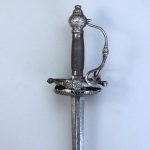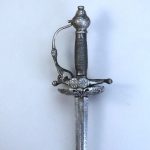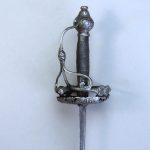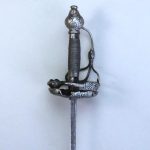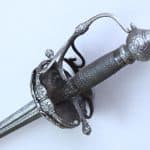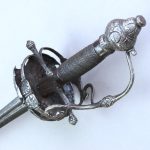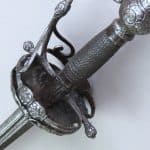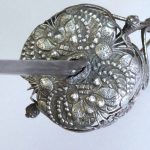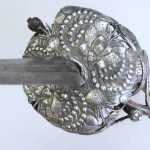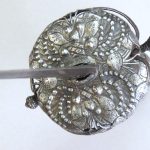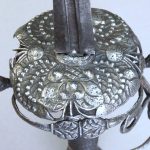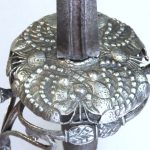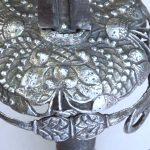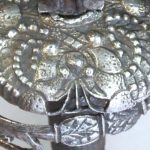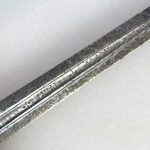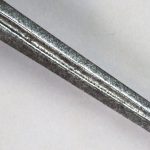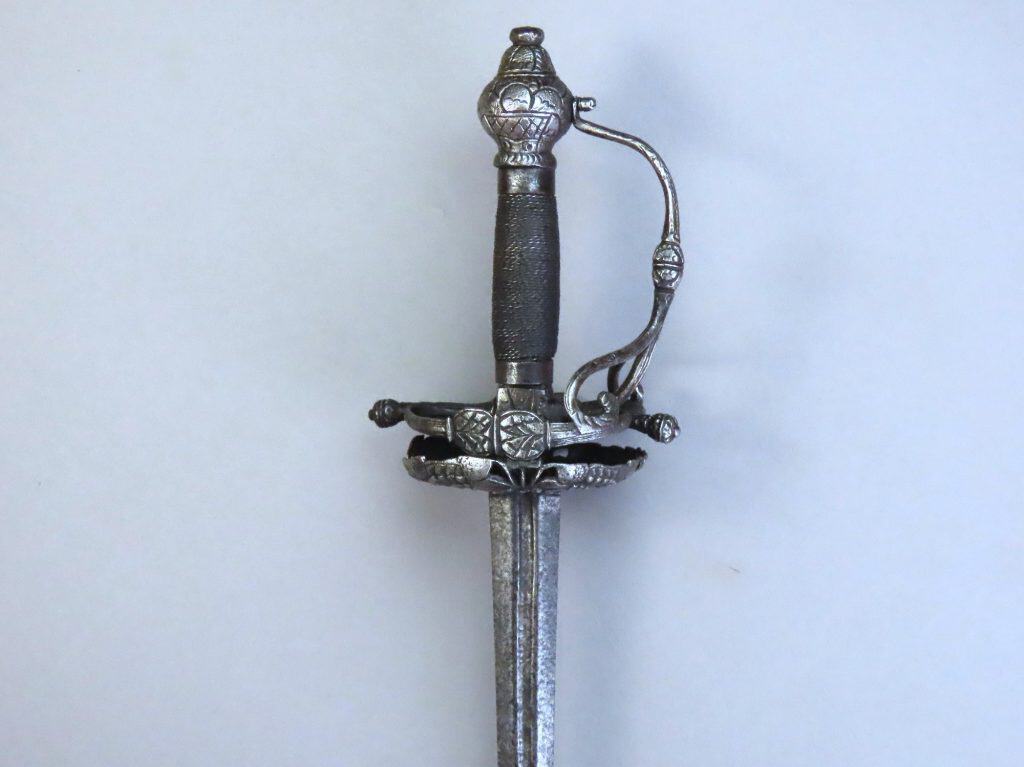
English Officers’ Finely Embossed Dish Hilt Rapier circa 1620 to 1650
To enquire about this itemplease click here
Price: £3,475
Ref: 42701131
Item Description
An English Officers’ Rapier dating to circa 1620 to 1650. The style of hilt and blade type show that the weapon was made for generalist or military use by a member of the officer class or gentry rather than for duelling. The hilt is intricately chiselled and bossed with floral and circular features in typically English 17th century style.
The prominent dish guard is forged in one piece from beaten iron with an upturned rim. It is finely chiselled on the outside, and bossed from the inside, with foliate sprays which are accentuated with dots. The rectangular section quillon block is of bold form and decorated with chiselled lines. Front and back horizontally formed quillons emanate from the block and terminate in swollen engraved knops.
Two flattened side guard rings emanate from each side of the quillons forged in contour with the dish edge beneath. The middles of the side rings are formed with double conjoined roundels chiselled in similar style to the exterior of the dish.
From the front a slender knuckle bow emanates from the quillon top and rises upwards in a “D” shape to terminate in a flattened angle which is pierced and secured to the pommel front by a screw. The bow is is markedly swollen half way along with a knop similar to those which form the quillon terminals. Two scrolled side guard bars emanate from the knuckle bow just below the knop and are attached to the side rings at the front to strengthen the structure. The bars are decorated with parallel incised lines in the English manner along the narrower lengths.
The solid pear shaped pommel has an integral waisted neck beneath and raised button on top. It is decorated with chiselled designs similar to those present underneath the dish guard and on the side guard ring roundels. The grip is of baluster shape and spirally bound with roped wire. Iron ferrules are present top and bottom.
The stiff blade is of tapering flattened lenticular section and 34 inches (86.5 cm) long. It has a short ricasso from which a deep fuller is cut extending for 6.5 inches (16.5 cm) along each side flanked with incised lines. Both fullers are stamped on the inside with the inscription “INRI MARIA” the words flanked and interspersed with dots and crosses. The blade was probably made in Toledo or Milan.
The blade is an import into England which did not have an established blademaking industry in the second quarter of the 17th century when the rapier was forged. Many blades were also imported from German blade making centres of which Solingen was the most important.
The rapier retains an even blackened dense russet patination all over. The hilt retains its pleasing original profile. The overall length of the rapier is just over 41.25 inches (just under 105 cm).
English rapiers of this date exhibit a common form and style, however, there are many variations under this umbrella. For different styles of English rapiers see Stuart C Mowbray, “British Military Swords”, 2013, Andrew Mowbray Publishers, Volume One, 1600 to 1660, pages 254 to 281.


